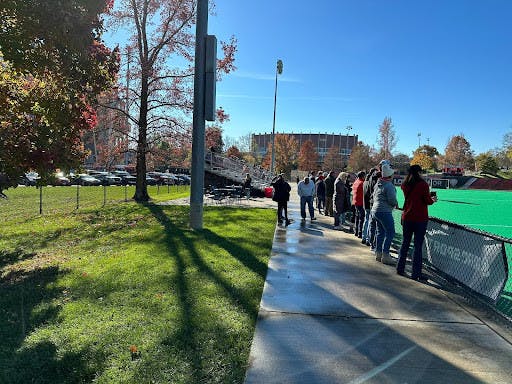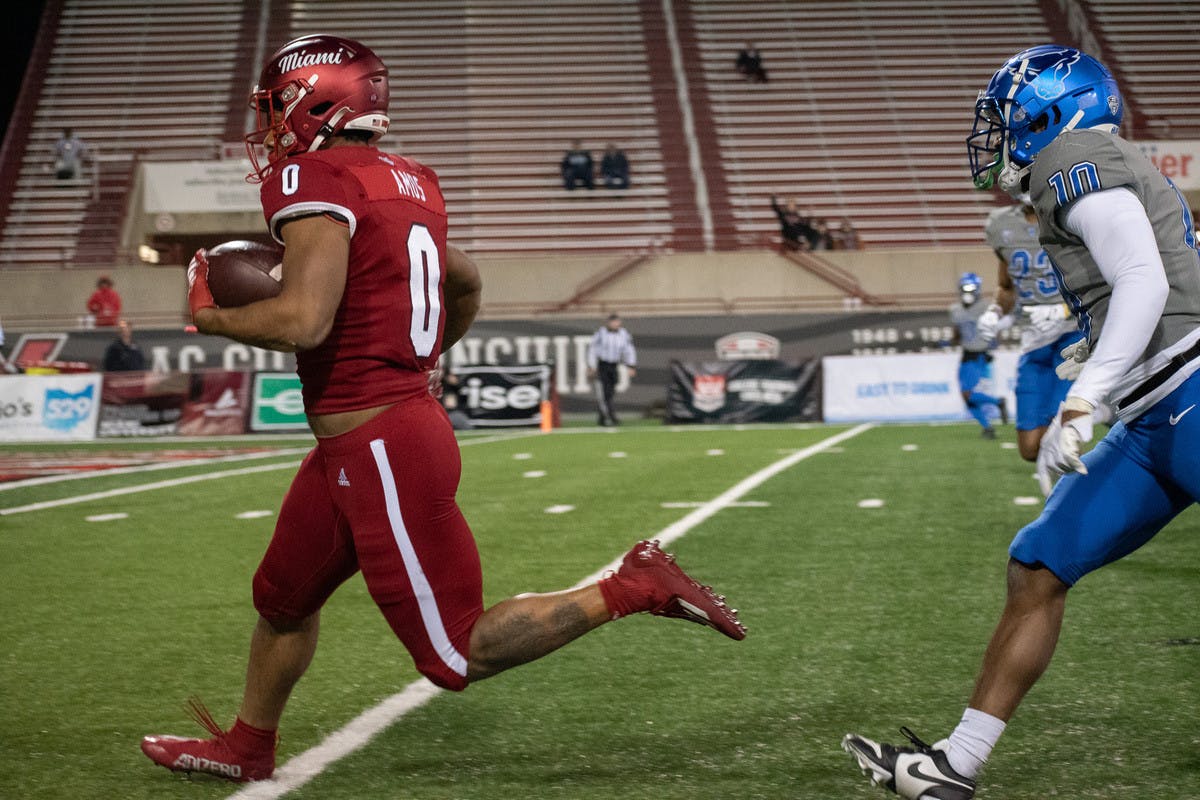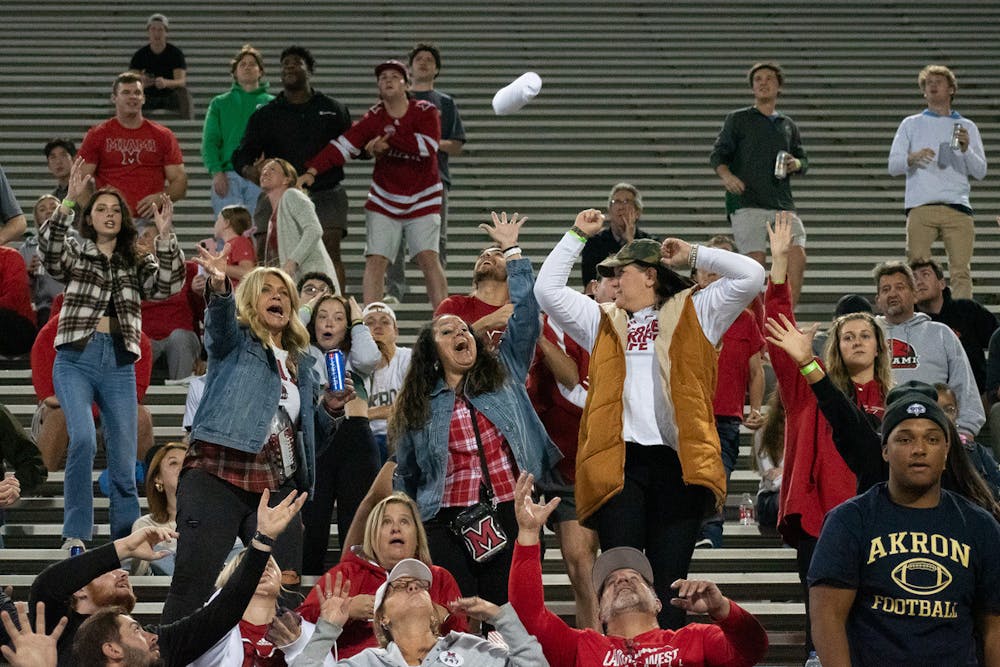The Miami University men’s basketball team was putting the finishing touches on a dominant 82-43 win over Spalding University on a Tuesday night late in November. However, there was one problem: a major lack of energy in Millett Hall. Excluding the pep band, around 30 students arrived to watch the RedHawks, most doing so while sitting down.
Events like this occur frequently on campus. What has led to this atmosphere, and more importantly, how can the school address the problem?
Field hockey head coach Iñako Puzo believes that taking programs for granted has led to complacency and a lack of support.
“I think many people in this community — and not just students, but also professors and some level of administrators — don’t know what we have,” Puzo said. “Sometimes, we have to step back and think how Miami would look without athletics, and recognize the impact athletics have on any campus.”

A crowd gathers for the field hockey Mid American Conference Championship Semifinals against Ohio on November 3rd, 2023.
The most obvious answer to Miami’s attendance problem is to have winning teams. That responsibility falls on athletes and coaches more than anyone else. Yet, Miami football, which won the Mid-American Conference (MAC) championship in 2023, averaged just 13,395 fans in attendance for home games in 2023. Yager Stadium holds nearly 25,000 spectators. Six MAC football teams averaged higher attendance in 2023.
There is more to creating an enjoyable atmosphere than just winning. People have to be aware of events and value the event over other priorities. Most importantly, people need to have a fun time at the game and want to return.
Most students at Miami have grown up supporting schools with larger brands. In Ohio, those schools are Ohio State University and University of Cincinnati. Of course, there is plenty of Indiana University, University of Notre Dame and University of Kentucky merchandise (among others) around campus as well. Other MAC schools struggle with a similar issue. Students would rather drive an hour or two to see Cincinnati or Ohio State play than get in free at a Miami game.
Travis Steele, the men’s basketball head coach, is no stranger to building elite atmospheres. At Xavier University, where he coached for four years before coming to the RedHawks, he helped build one of the best atmospheres in college basketball. He believes that changing the culture starts with getting students to take pride in where they are right now.
“The bigger concern is how do we get students to take pride in the place that they’re at,” Steele said. “We want to see Miami, right? It’s where we are, it’s what we represent. I think the key is moving people emotionally to get them to have that feeling.”
Enjoy what you're reading?
Signup for our newsletter

Rashad Amos leads the RedHawks to a victory against the Buffalo Bulls in front of an empty stadium
Students appear to get “that feeling” Uptown more than in Millett Hall or Yager Stadium.
Part of the reason why they may not find excitement in Miami’s athletic venues is because of how the university controls its sponsorships. Miami’s athletic department outsources sponsorships to a large company called Van Wagner. Oftentimes, these sponsors can be seen in the in-game production. If you have been to a Miami football game, you may be familiar with the Kroger Dance Cam or the SDS Delivery of the Game.
These sponsor moments in games take away opportunities for the university to try fun and engaging activities which could make the atmosphere more energetic.
The final large factor in a student coming to a game or not is if they even know there is a game going on. A lack of knowledge about game times makes it almost impossible to get students in the building because of how many other priorities they have. This is where athletic communications and marketing comes into play.
Lindsay Sparks is the Chief Athletic Marketing and Communications Officer at Miami. She oversees many student interns, helps balance the $70,000 annual budget across the five ticketed sports and coordinates different plans to promote games while making sure the staff is ready for gameday. She also helps run in-game events.
“All you can do is make sure that students know there’s the opportunity,” Sparks said. “That part is hard because you have no control over the power of choice. The second factor would be: Did they have a good time while they engaged the way they chose to engage?”
Despite the current efforts within the athletic department, including working with university social media accounts and sending information to residence hall directors, some think that more can be done to ensure students are actually informed of what is going on with Miami Athletics.
“We need to do a better job of putting these two worlds together,” Puzo said, “because there are two different bubbles right now: the Athletic Department and the rest of the university.”
Steele seconded the sentiment expressed by Puzo.
“My first several years at Xavier, we sold that thing out,” Steele said. “It wasn’t always like that, but it was important to the university, and it was important to the athletic department … When I first got here, I was floored with the little student support we got, but have a plan to attack that. It’s not going to fix itself.”




